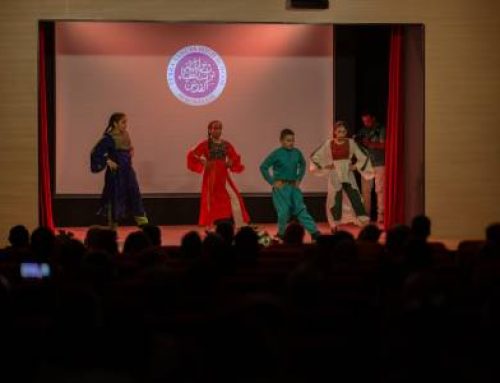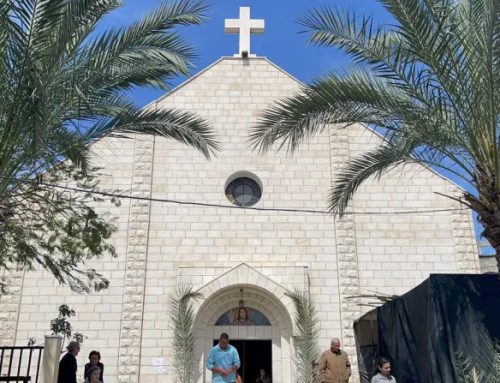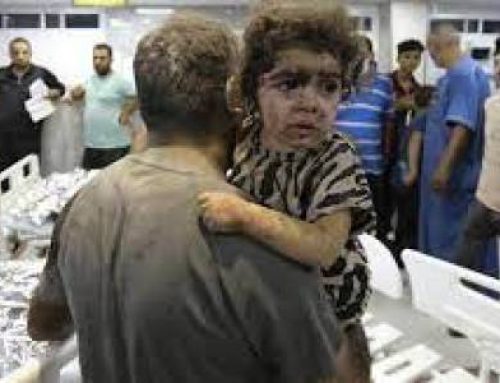The Guesthouse: literally ‘the guest house’. It is a model of hospitality and tourism that is developing a lot, in recent times, all over the world. It is a ‘light’ offer, night and breakfast, with the possibility of living the spaces of the Guesthouse in a flexible way, as if they were really those of your own home.
In the Holy Land, the model of the Guesthouses, thanks to their agile size and the simplicity of their welcome, is gaining a lot of traction. Pro Terra Sancta manages some facilities in the city and beautiful and significant places for this corner of the world.
The Guesthouse of Dar Mamilla
In Jerusalem there is the Guesthouse of Dar Mamilla, the “place of Mamilla”, named after a saint to whom an important church is dedicated in the surroundings. The Guesthouse is located inside the convent of the Sisters of St. Vincent de Paul, in a wing fallen into disuse. Precisely the inactivity of these spaces, which have now become a dead weight for the coffers of the convent, has stimulated creativity, and here, four years ago, the Pro Terra Sancta Guesthouse was born within this sector of the building.
But the integration of the Guesthouse and the convent goes far beyond the sharing of spaces. The proceeds of Dar Mamilla, in fact, are partly destined to the nuns themselves, not only as rent, but as direct funding for the social projects that the sisters run in Jerusalem. In the midst of luxury, where 150 billion dollars were spent on the construction of a state-of-the-art shopping center, children and the disabled risked losing their voice in the flow of tourists and visitors.
Here the Sisters of St. Vincent de Paul have decided to open some projects to their rescue, hosting inside their convent a clinic intended precisely for the treatment of chronic disabilities. It is to assist these activities that the funds of Pro Terra Sancta, obtained from the Guesthouse of Dar Mamilla, are directed.
Bethlehem: on the road of the Magi
A similar model is proposed again in Bethlehem, the Palestinian town that famously houses the Basilica of the Nativity. A stone’s throw from this building, which stands white in the clear sky of Palestine, is the Guesthouse of Dar al-Majus, attached to the large office complex and cultural center just opened by Pro Terra Sancta.
The name, by itself, is very suggestive: it literally means “the place of the Magi”. And this is not a commercial gimmick; in Bethlehem, the district that houses the Guesthouse and the new office of Pro Terra Sancta has the name of “Dar al-Majus”. And, not by chance, this district is located at the end of Star street, the “Street of the star”, which would re-propose on the steep slopes of the town the route traveled by the Magi of the East in their pursuit of the comet star.
It is here, in this place full of faith and history, that the Guesthouse of Dar al-Majus is located. A beautiful courtyard framed in green leads to the rooms that, in one way or another, are linked to the evangelical history of Bethlehem: we find the shepherds’ room, the Magi’s room, the manger’s room…
The social purpose of the Guesthouse
Within Dar al-Majus there are many employees who have been hired as a result of rather stormy work or personal events. The Palestinian town, literally kept alive by tourism, has witnessed an unbearable economic meltdown during the months of the pandemic. And the Bethlehemite context, forcibly huddled beyond the separation wall, has long suffered from the lack of mobility and the consequent anoxia of its younger forces.
To cope with this kind of problem, Pro Terra Sancta has created, with its Guesthouse, new jobs. The personal and professional cases of each of the employees were carefully evaluated by a team of experts from the world of social services and numerous hires were made. A way to create hope right there, where the very hope of the world became flesh.
Guesthouse in Samaria
And in Palestine, Pro Terra Sancta was not limited to Bethlehem. Further north, in the hilly and green region of ancient Samaria, it has opened two Guesthouses, along with the Mosaic Centre. You can find them in Sebastyia and Nisf Jubeil, a small village of dry stone walls and small huts perched on slopes of earth and grass. Here, in the peace and windy silence of almost uninhabited lands, you can admire a real naturalistic paradise: the hills of Samaria slope gently to the west, and, far away, at sunset, the waves of the sea sparkle.
But Sebastyia is also a paradise for archaeologists. Here was implanted an ancient colony of the Hellenistic age, which later became an important Roman town. The great columns that stand out in its main square, and the beautiful theater visible just a few steps back, are authentic for this ancient history of the center.
The role of women
Here, too, the proceeds of the Guesthouses are invested with a social purpose. In fact, the Ceramic Centre is located in Nisf Jubeil, a group of four women who have been hand-painting ceramic objects, produced by themselves, for years. It is, again, a very important job offer and professionalization in a context in which the figure of women risks, as always, to disappear. And it is, then, a precious road along which to keep alive the ancient tradition of ceramic manufacturing, important for centuries in these areas.
In short, with summer approaching, it is time to think about a holiday in the Holy Land. If you are still undecided.
ww.proterrasancta.org






